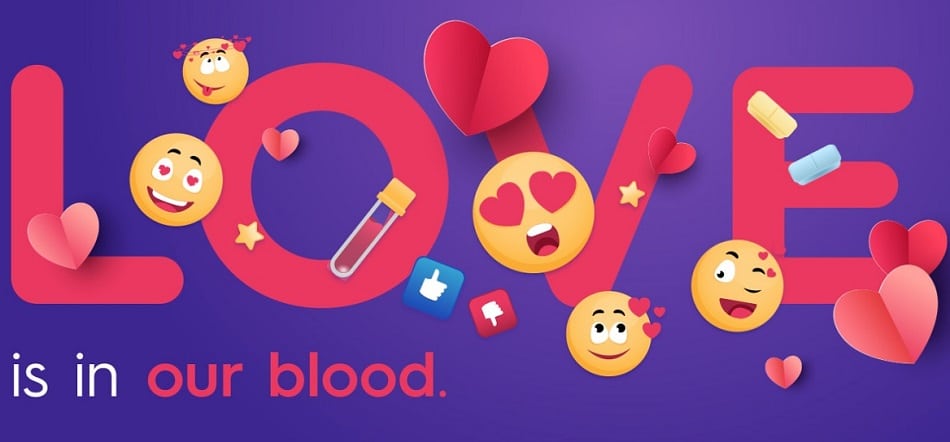Cold Sores
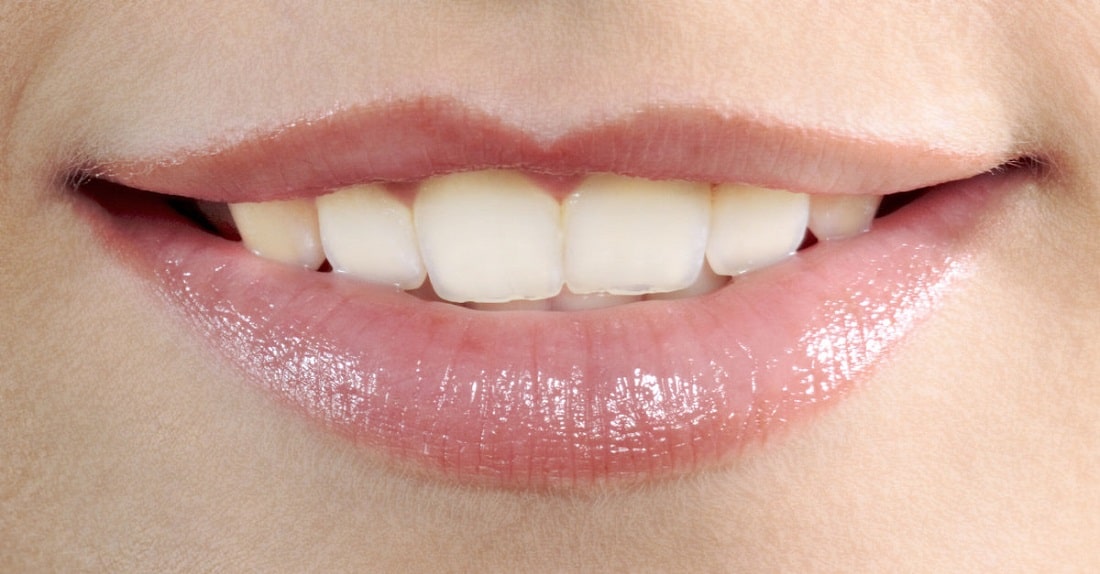
What are cold sores?
They are highly contagious affecting 64% of people worldwide (estimated 3.5 billion people) under 50 years old 1,2. Oral cold sores can reoccur up to 6 times a year.3
Cold sores are caused by a virus called Herpes Simplex Virus (HSV) 1. The virus enters the body through a crack or damage in the skin thereafter it remains dormant in inside the body in the collection of nerve cells (ganglia) near the spinal cord that supply the nerve fibres to the infected area1. Although most people aren’t exactly sure when they first encountered the virus, it’s usually contracted in early childhood 3,4. Periodically the virus will reactivate when ‘triggered’ causing the virus to travel through the nerve fibres back to the skin to cause eruptions of blisters in the same site of infections 1,3.
Cold sores spread from person to person through direct contact with an infected area i.e oral-to-oral contact like kissing or sharing utensils or towels, even when the person is asymptomatic 1,3. If left untreated cold sores can last up to 14 days 1.
Types of Herpes Simplex Virus
There are 2 strains of this virus; HSV-1 and HSV-2. The main differentiator of the first two herpes simplex viruses is their location or where they appear 1,2.
- Herpes Simplex 1 (HSV-1) is usually associated with sores on the lips (Herpes labialis) although an estimated 8% of people worldwide have genital cold sores due to HSV-1 virus can cause sores on the lips 1,2.
- Herpes Simplex 2 (HSV-2) is associated with sores on the genitals and is almost entirely sexually transmitted 1,2.
Primary vs Recurrent infections
Primary Infection:
The initial cold sore infection can appear 20 days after contact with the virus 3. The first infection may range from asymptomatic to very painful with symptoms of painful sores inside the mouth, tender enlarged lymph nodes, fatigue, fever, sores around the mouth and feeling generally ill 1,3,4,7. This can lead to poor oral intake and dehydration 3. After the primary infection, the virus remains dormant in the body to periodically reactivate to cause symptoms 1
Recurrent infections:
Recurrent infections can reoccur up to 6 times a year1,3,4. They can affect appearance and impact quality of life 3. Unlike a primary infection, recurrent infections usually only produce a single cold sore on the rim of the lip, rarely involving a cluster of sores of the gums or roof of the mouth 1. The duration of the symptoms tends to be shorter with symptoms being less severe 3.
Stages of a cold sore
It typically progresses through 5 stages 1,2
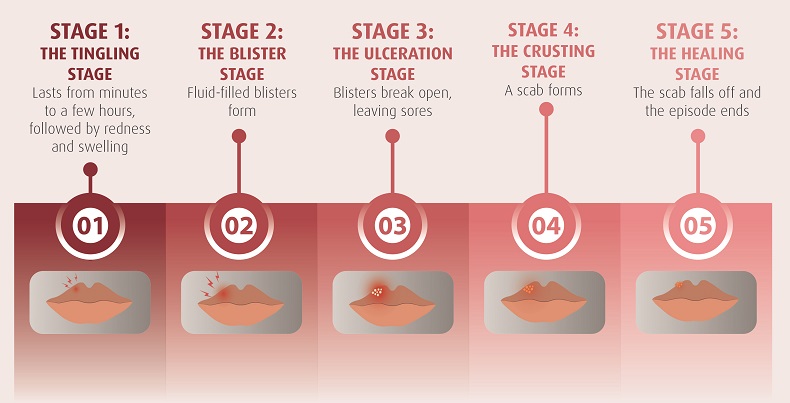
Cold sore triggers
The herpes simplex virus (HSV-1) is the cause of the infection however the infection can be reactivated by triggers such as psychological and environmental factors 1,3. Triggers of cold sore outbreaks vary from person to person. It’s important to identify what your cold sore triggers are, so you can manage them to help avoid developing a cold sore. Here are some of the more common cold sore triggers 1,3,5,6,7.
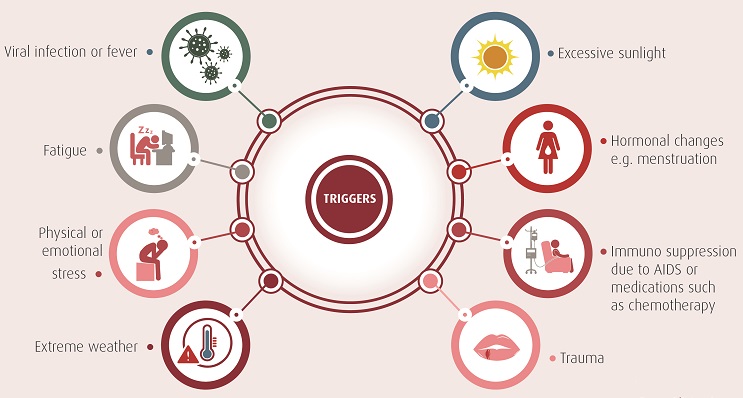
Risk factors
People who have weakened immune systems are at higher risk of complications from the virus. Medical conditions and treatments that increase your risk of complications include 7:
- HIV/AIDS
- Severe burns
- Eczema
- Cancer chemotherapy
- Anti-rejection drugs for organ transplants
Tips to prevent the spread of cold sores
To help avoid spreading cold sores to other people or to other parts of your body, you might try some of the following precautions 7
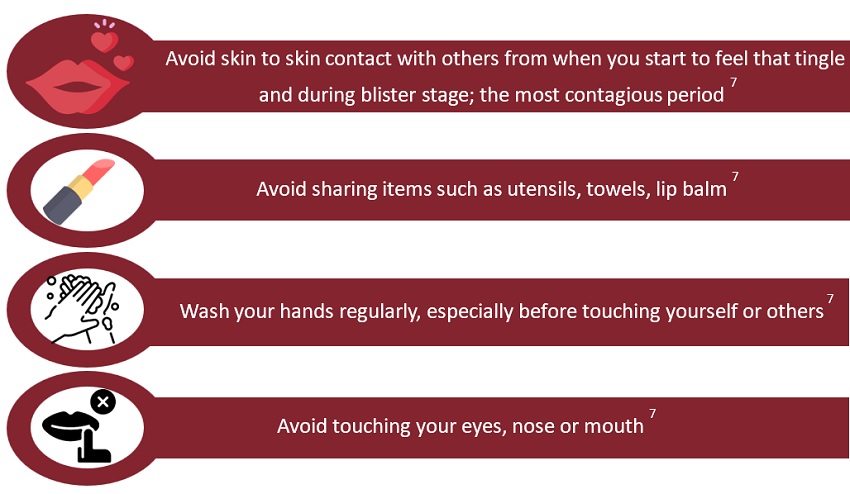
Treatment
There is no current cure for cold sores however antiviral medications are used to treat cold sores 1. Treatment is most effective if started early, within the prodromal phase; when the lips start to tingle, burn or become itchy, before the blisters form1. Commonly used antiviral medications are acyclovir or penciclovir 1.
Acyclovir is an antiviral agent that is active against Herpes Simplex Virus type 1 and type 2 and can be used for both primary and recurrent infections 8. Acyclovir works by inhibiting viral DNA synthesis and reducing severity of symptoms 8,10. Early application of Acyclovir has an average healing in 4.1 days, cutting cold sore duration by half (average cold sore duration is between 10-14 days without treatment) 1,8,9.
Antiviral creams like Acyclovir provide the below key benefits to cold sore patients:
- Prevents the virus from replicating 8
- Relieves pain associated with the cold sore 9
- Reduce the severity of symptoms 10
- Speed up healing and reduces cold sore duration 1,9
- Therapy should be initiated as soon as possible following the onset of signs and symptoms of herpes simplex infection 8
- Treatment should be continued for 5 days. If healing has not occurred, the treatment may be prolonged for up to 10 days 8

- Therapy should be initiated as soon as possible following the onset of signs and symptoms of herpes simplex infection 8
- Treatment should be continued for 5 days. If healing has not occurred, the treatment may be prolonged for up to 10 days 8

BUY NOW
Related Brochures
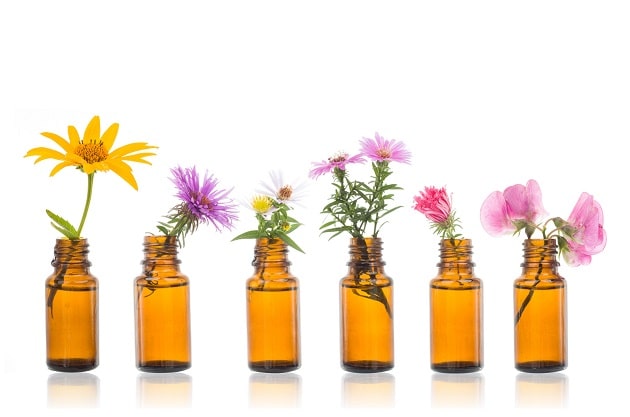
colds-and-flu
IS IT A COLD OR IS IT FLU?
